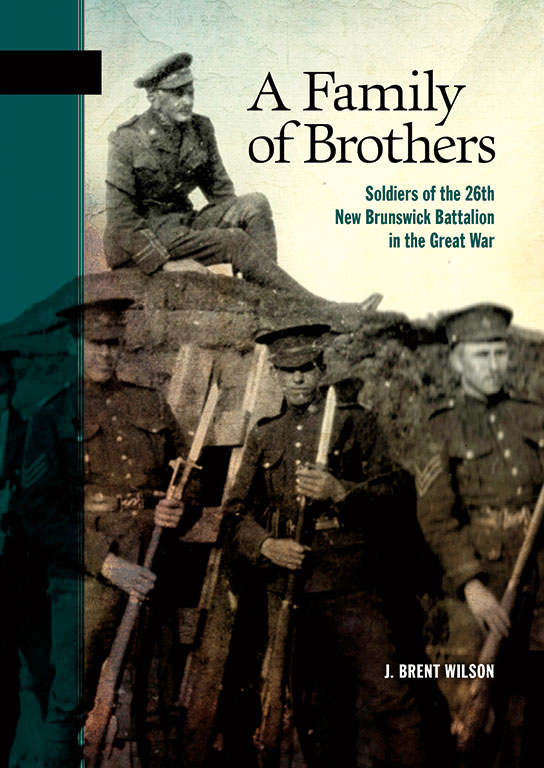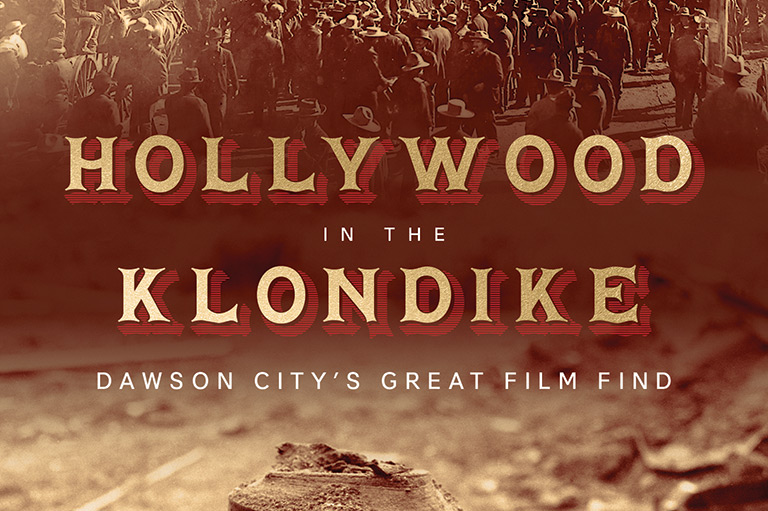A Family of Brothers

A Family of Brothers: Soldiers of the 26th New Brunswick Battalion in the Great War
by J. Brent Wilson
Goose Lane/NBMHP, 296 pages, $22.95
A double review with
A Township at War
by Jonathan F. Vance
Wilfrid Laurier University Press, 308 pages, $34.99
In exploring the Great War’s impact on Canada, there are national histories, provincial histories, and even studies of cities at war. And yet the community level is often ignored. With more than half of Canada’s population considered rural in the 1911 census, we have few books that present how the war was experienced in smaller communities.
In A Township at War, Jonathan Vance, a professor of history at Western University and one of the leading experts on Canada’s Great War experience, turns his sights on East Flamborough, between Guelph and Hamilton in Ontario.
This is a very personal history for Vance, who was born in the region and whose family has deep roots there. He consciously works his own perspective into the story, especially in his attempt to track down records.
A study of East Flamborough, with its population of 2,646, seems limited, but it is a model from which to better understand other small communities across the country. Vance paints a rich picture of pre-war life in East Flamborough, exploring the impact of rural depopulation as well as the importance of roads and railways for connecting communities.
With Canada at war in August 1914, Vance tracks the enlistment of men from the community and how the war increasingly seeped into the region, affecting people who lived there. And yet the war was not all-encompassing, with country fairs remaining important, farm work continuing, and many other social get-togethers — albeit with a steady reorientation to patriotic war work.
While Vance has dug deep to find letters and accounts of East Flamborough men who served overseas, the strength of the book is his examination of this rural community, especially the continuities from before the war and the changes wrought between 1914 and 1918.
Local recruitment is studied in detail, and Vance offers new thoughts on “kinship networks” that, at times, had the power to encourage or discourage enlistment. The local recruitment effort in 1915 and 1916, sometimes derided in the literature as being chaotic and overlapping, also ensured that local communities had “a greater stake in the war.”
There are other new findings. For example, in East Flamborough, there was little evidence of the national conscription crisis, which is usually a central narrative in Canada’s Great War story. It was absent in this community largely because there were no resident francophones.
Still other aspects of the war appear more forcefully through a local study. One sees the impact of a traumatic battle like the Somme, where the Canadians suffered about eight thousand dead and sixteen thousand wounded. For this community, such large, impersonal numbers translated into the death of half a dozen men, which caused a “profound shock” followed by grief.
The terrible battlefield losses are also revealed through J. Brent Wilson’s A Family of Brothers. By analyzing the 26th Battalion, raised in New Brunswick, Wilson tracks the community of men who served in it or passed through it, including those who died while in service.
By war’s end, some 5,719 soldiers had served in the 26th. The soldiers in the battalion remained deeply connected to the many local communities where they had resided before the war, with letters, care packages, and souvenirs passing back and forth from the Western Front to New Brunswick.
This is a rich social military history, and Wilson, a professor of history at the University of New Brunswick, has drawn upon hundreds of letters, official reports, and the unit war diary to tell his story.
Wilson’s readable book offers new insight into the miserable experience of training in Canada, an aspect of the war experience that is almost entirely lacking in the literature. Overseas, there are many powerful eyewitness accounts to the experience of combat and death in the war of attrition. One must suffice.
Roy Edwards wrote in March 1916: “It is grim work out here. In the five months I have been at the front I have seen awful things. I have seen sights bad enough to make a strong man weep, but over here men soon become philosophers, fatalists if you will. We quickly harden to our work.”
And yet the community of soldiers allowed men pressed and pressured by incredible strain to keep serving at the front. Wilson allows the soldiers to speak, but he also injects insightful commentary into matters of rest and leisure, the closed culture, discipline and punishment, and venereal disease (with which twenty-two per cent of one sample group was affected).
Both Vance and Wilson continue the story after the armistice, exploring how communities welcomed back veterans, tried to deal with those suffering long-term physical or mental injuries, and built memorials to honour the service and the sacrifice.
The St. John Standard reported presciently, “They are not the same men who went away.” The war remade the world, with the destruction of old empires, the creation of new countries, the unleashing of Communism, and so much more.
But it was a war that reverberated across countless communities in multiple continents — and that is one reason why it continues to matter more than one hundred years later.
Themes associated with this article
Advertisement




